Holmes Institute HI6007: Statistics and Research Methods Assignment
VerifiedAdded on 2023/03/17
|7
|1062
|74
Homework Assignment
AI Summary
This assignment analyzes the relationship between Retail Turnover per Capita and Final Consumption Expenditure using statistical methods. The analysis includes plotting time series data for both variables, creating a scatterplot to visualize their relationship, and calculating descriptive statistics such as mean, median, variance, and correlation. A simple linear regression model is developed to predict Final Consumption Expenditure based on Retail Turnover per Capita. The assignment explores the model's coefficients, standard error, and coefficient of determination (Adjusted R-squared) to assess its fit and explanatory power. Hypothesis testing is conducted to determine the significance of Retail Turnover per Capita in predicting Final Consumption Expenditure, concluding that it has a significant increasing effect. The findings suggest a strong positive correlation between the two variables, with the model explaining a substantial portion of the variance in Final Consumption Expenditure.
1 out of 7
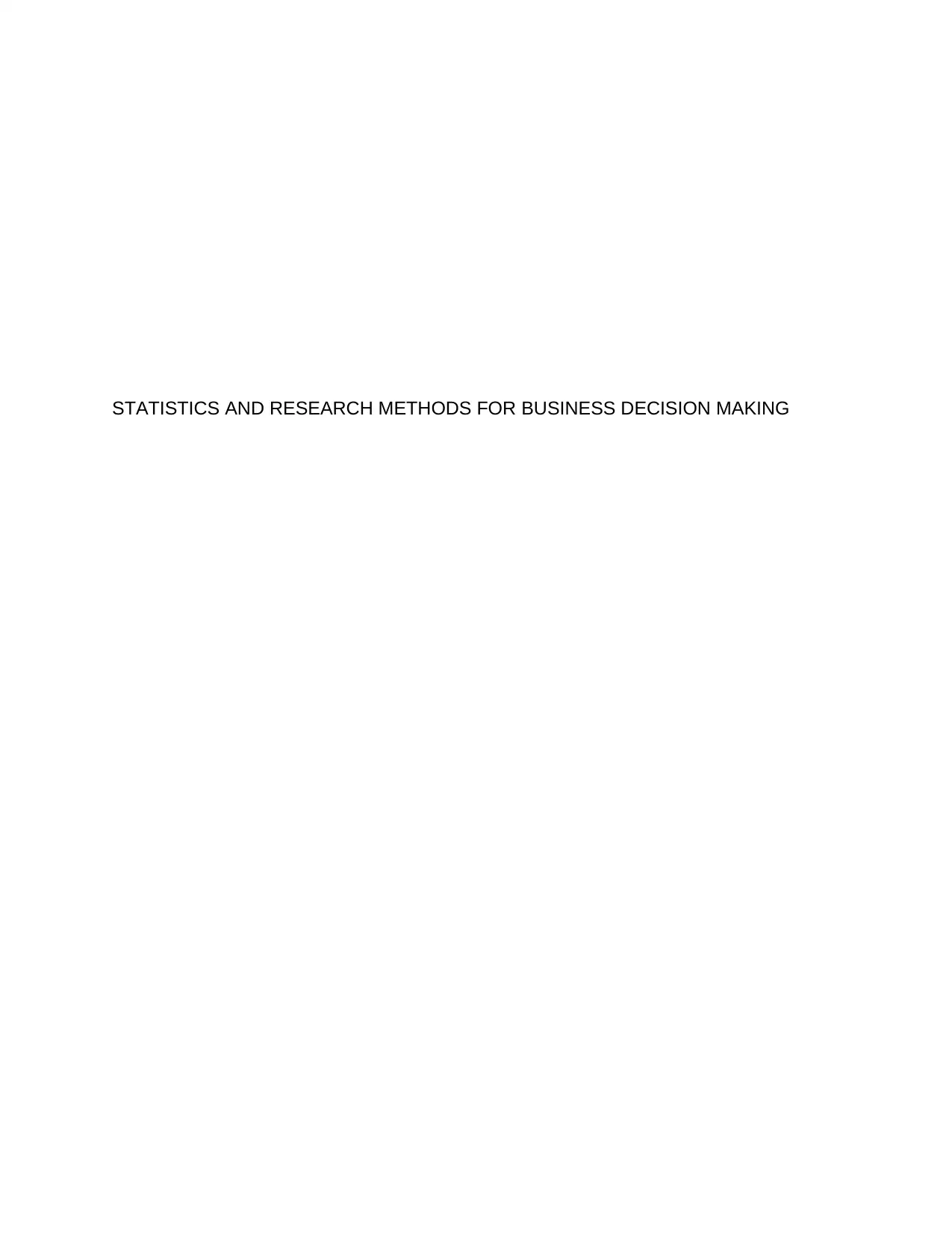
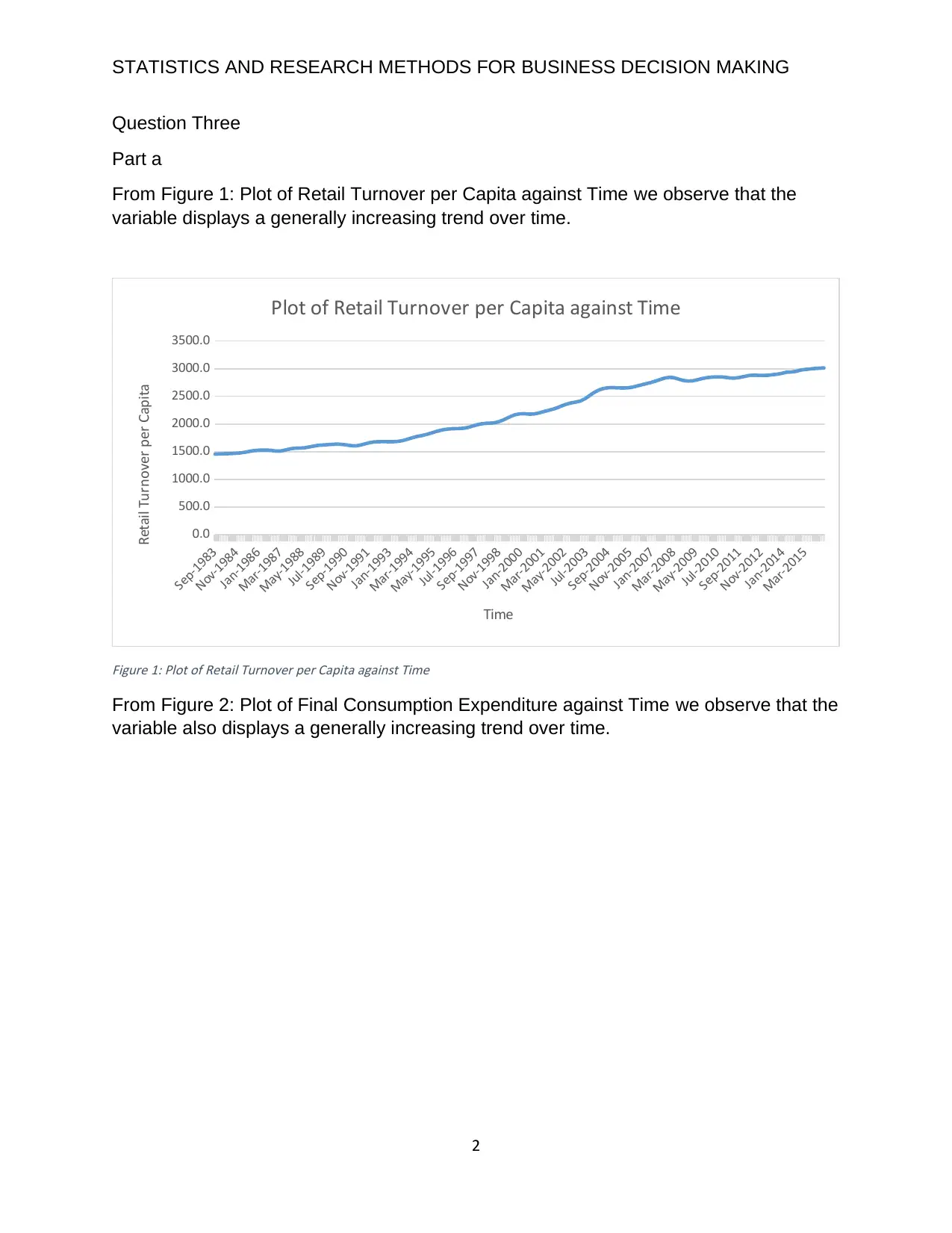
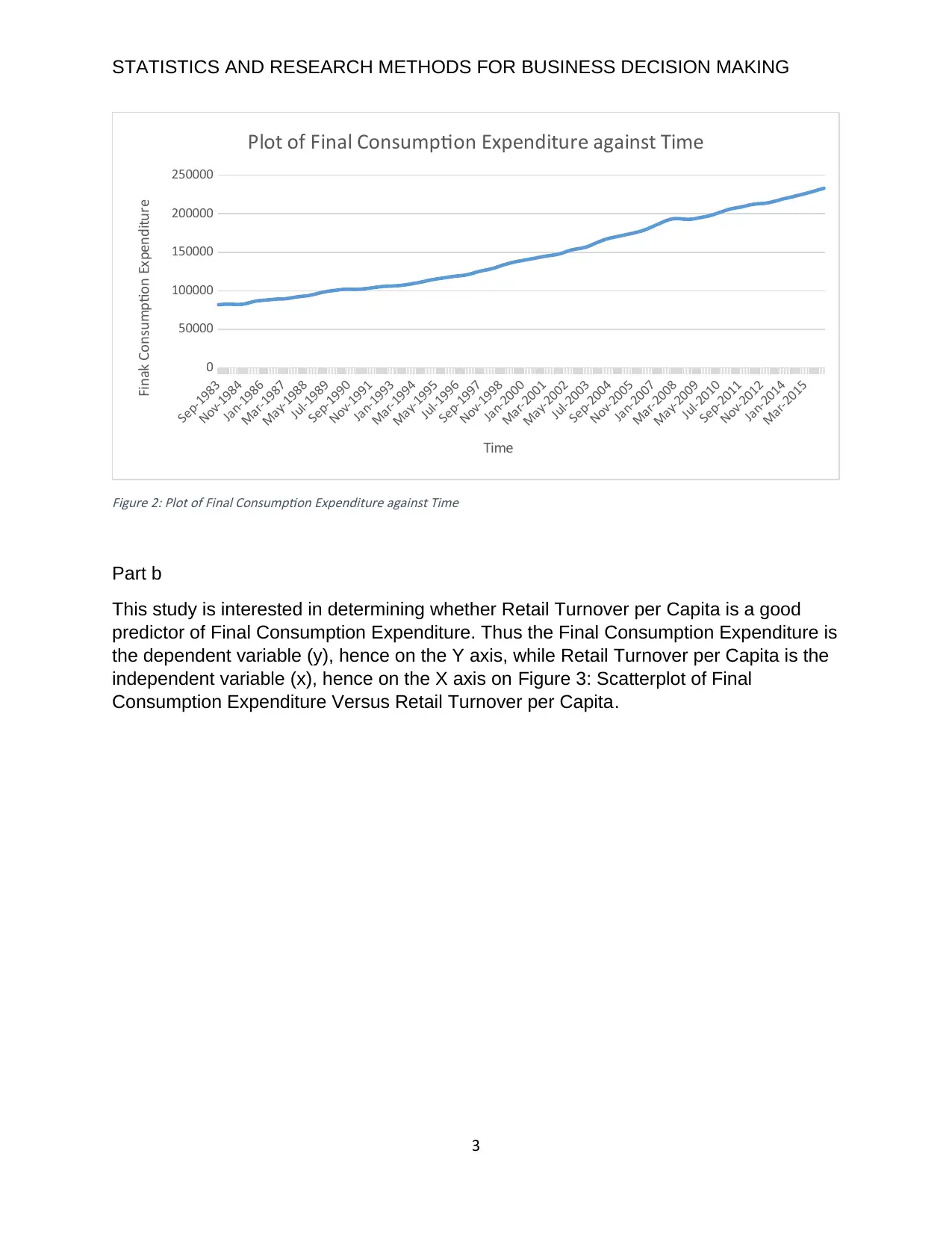

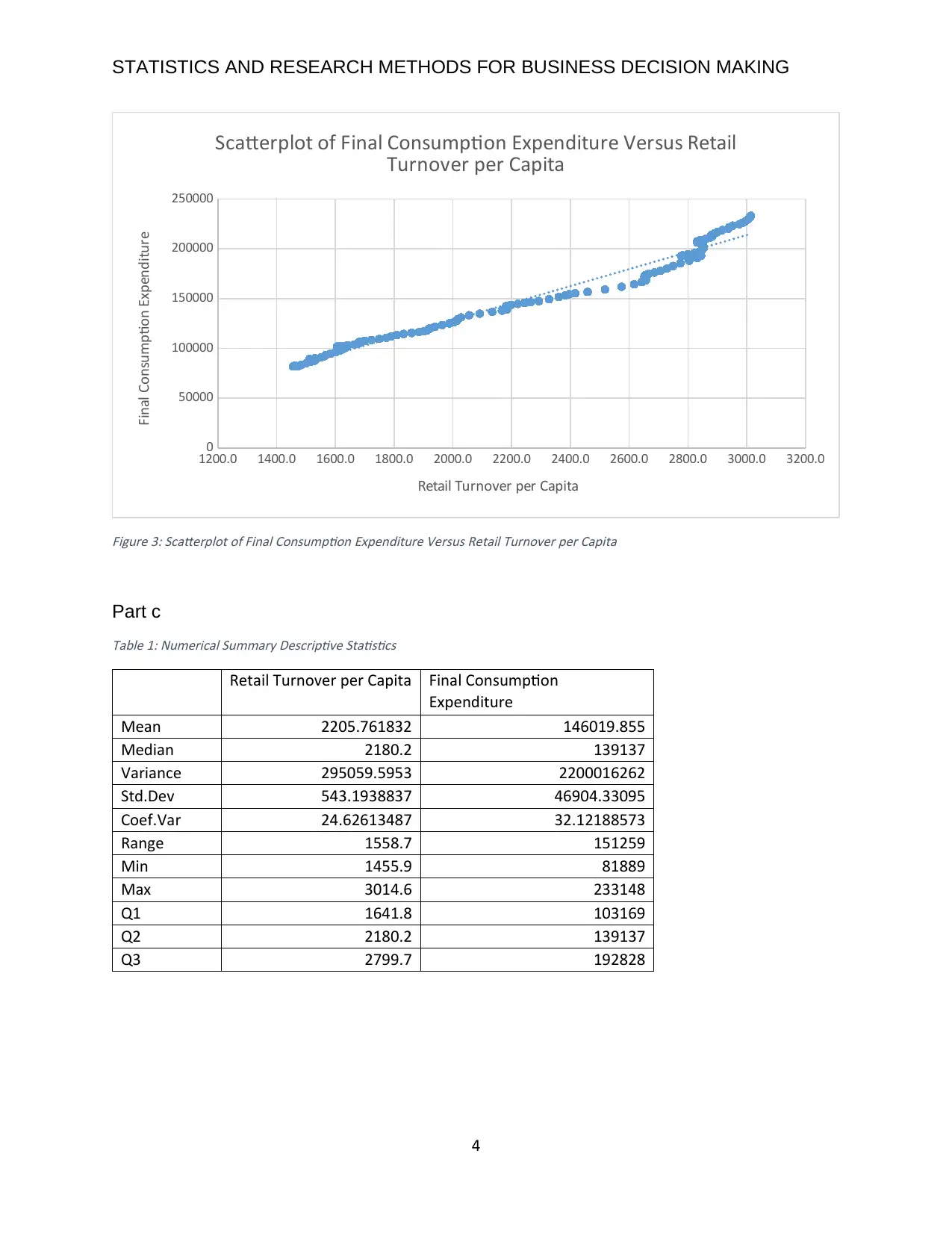
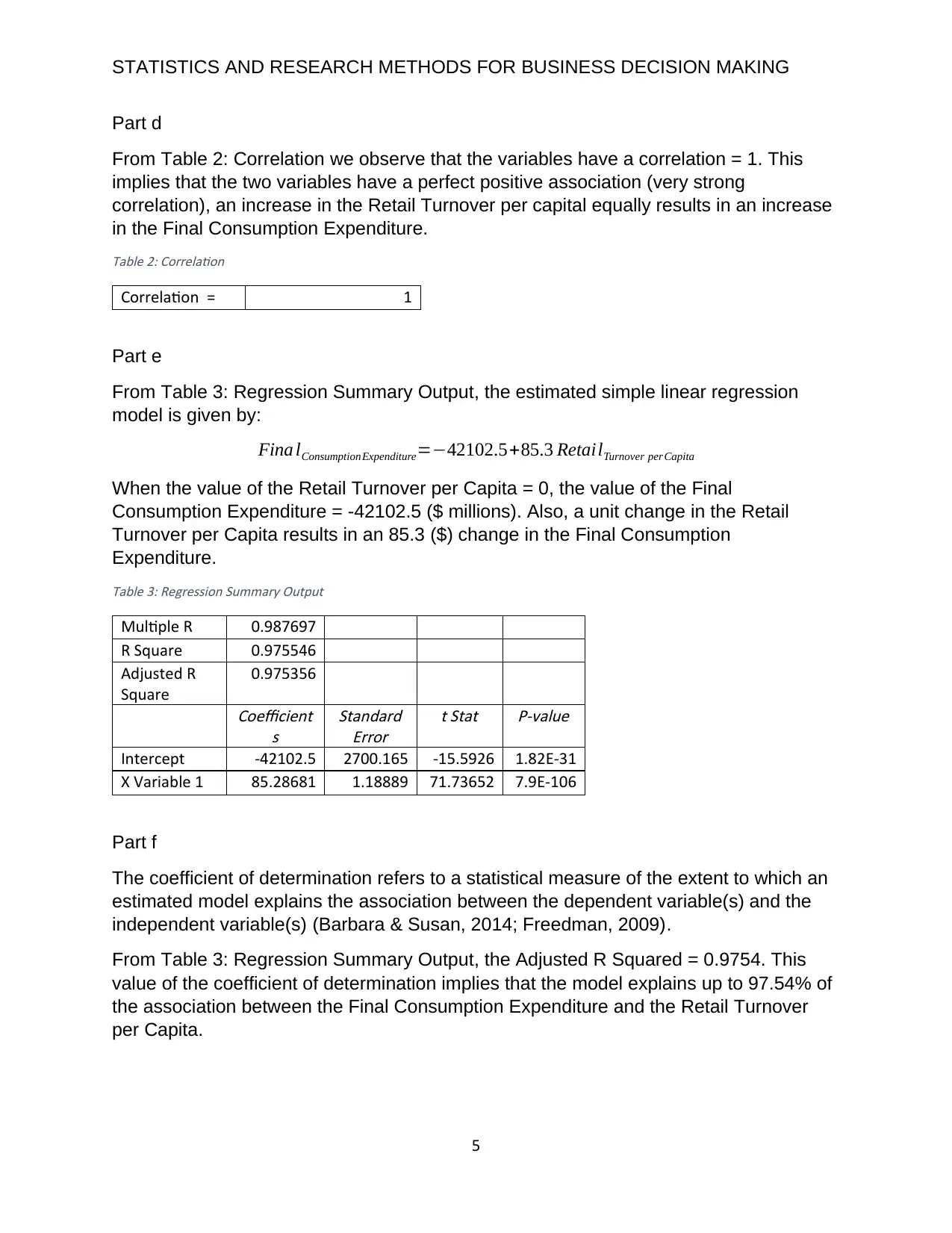







![[object Object]](/_next/static/media/star-bottom.7253800d.svg)